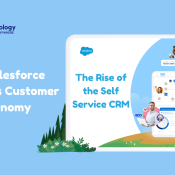
Unlocking Insights: The Power of Customer Satisfaction Surveys
Customer Satisfaction Surveys (CSS) are crucial tools for modern enterprises to understand and meet customer demands. They help bridge the gap between customer expectations and corporate solutions, ensuring that businesses meet their customers' needs and exceed expectations. With rapid technological advancements and unprecedented access to information, consumers today are more empowered and demanding than ever before.
What is the Customer Satisfaction Survey?
CSS is a written survey that assesses customer satisfaction or dissatisfaction with various aspects of an organization's goods, services, or overall customer experience.
Varieties of Customer Satisfaction Surveys?
There are several types of CSS, each designed to elicit specific information on distinct areas of the customer journey. These include Consumer Satisfaction Surveys (CSAT), Net Promoter Score (NPS), Client Effort Score (CES), Transaction Surveys, Product Experience Surveys, Onboarding Surveys, Exit Surveys, Customer Experience Surveys, Staff Feedback Surveys, Website Experience Surveys, Mobile App Experience Surveys, and Voice of the Customer (VoC) Programs.
Understanding the Strategic Significance of Customer Satisfaction Surveys
A key component of well-informed decision-making is CSS, which helps businesses better align their strategies with client expectations, boosting their competitiveness and relevance in the market. It also promotes a customer-centric culture within firms, ensuring that businesses are responsive to customer needs and preferences.
Incorporating Salesforce into your customer satisfaction survey strategy enhances efficiency, building deeper insights, and more impactful actions. By understanding and meeting customer demands, businesses can create a more customer-centric culture and improve their overall customer experience.
Customer Satisfaction Surveys (CSS) are a valuable tool for businesses to assess customer satisfaction levels, predict future developments, and build brand equity. CSS allows firms to identify potential difficulties early, reducing risks and protecting brand reputation. To successfully implement CSS, companies should design well-designed surveys using Salesforce Survey tools, choose an appropriate sample size and composition, and select appropriate distribution channels.
Data analysis techniques are used to generate actionable insights from survey results, such as statistical methods, sentiment analysis, and text mining techniques. To ensure successful deployment, companies should establish clear objectives and key performance indicators (KPIs), offer incentives and awards to encourage respondents to complete surveys and provide constructive criticism, and create structured feedback loops to share results with relevant parties.
Continuous improvement is crucial in CSS implementation. Regularly requesting consumer feedback, reviewing survey responses, and implementing specific modifications show dedication to continuous improvement and client-centricity. Implementing Salesforce workflows to automate follow-up actions based on survey responses can foster a culture of continuous improvement within the organization.
To overcome challenges and pitfalls in CSS implementation, firms should take a planned approach to survey deployment, combining frequency with relevance and making sure surveys are regularly updated. By implementing these strategies, businesses can improve their customer satisfaction, build a positive brand image, and maintain a strong reputation.
In summary, user satisfaction surveys are crucial for enhancing customer experiences and organizational excellence. By incorporating Salesforce into your survey strategy, businesses can gain profound insights into consumer sentiment, make targeted improvements, and create meaningful interactions. Salesforce's extensive range of CRM tools and services allows firms to streamline all parts of the survey process, from design to analysis.
Using Salesforce for your customer satisfaction survey strategy has various advantages, including expediting the entire survey process, using straightforward survey tools, multi-channel distribution options, and advanced analytics. Salesforce enables firms to respond quickly to feedback, increasing satisfaction levels and creating long-term customer connections. Partnering with Salesforce specialists improves integration by allowing for customization of surveys using specialized solutions and choices.
Salesforce's data cloud is bridging the gap between data and customer experiences, providing a guiding signal for businesses to establish long-term relationships with customers, generate innovation, and confidently navigate the difficulties of the digital world. By utilizing Salesforce's power with CloudsR Technology businesses can not only measure satisfaction but also enact meaningful change, solidifying their position as customer-centric leaders in their respective industries.
Conclusion
User satisfaction surveys serve as guiding signals, highlighting the path to better customer experiences and organizational excellence. Businesses that accept CSS's strategic relevance may establish long-term relationships with their customers, generate innovation, and confidently navigate the difficulties of the digital world.




